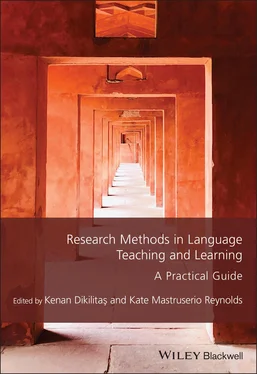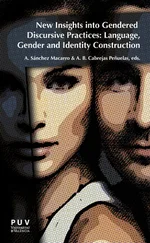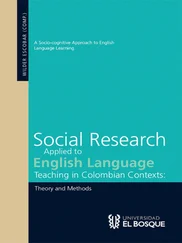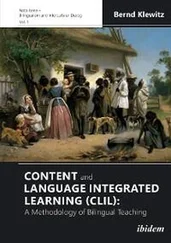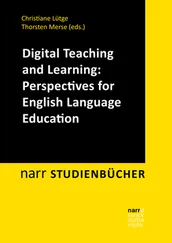Research Methods in Language Teaching and Learning
Здесь есть возможность читать онлайн «Research Methods in Language Teaching and Learning» — ознакомительный отрывок электронной книги совершенно бесплатно, а после прочтения отрывка купить полную версию. В некоторых случаях можно слушать аудио, скачать через торрент в формате fb2 и присутствует краткое содержание. Жанр: unrecognised, на английском языке. Описание произведения, (предисловие) а так же отзывы посетителей доступны на портале библиотеки ЛибКат.
- Название:Research Methods in Language Teaching and Learning
- Автор:
- Жанр:
- Год:неизвестен
- ISBN:нет данных
- Рейтинг книги:5 / 5. Голосов: 1
-
Избранное:Добавить в избранное
- Отзывы:
-
Ваша оценка:
- 100
- 1
- 2
- 3
- 4
- 5
Research Methods in Language Teaching and Learning: краткое содержание, описание и аннотация
Предлагаем к чтению аннотацию, описание, краткое содержание или предисловие (зависит от того, что написал сам автор книги «Research Methods in Language Teaching and Learning»). Если вы не нашли необходимую информацию о книге — напишите в комментариях, мы постараемся отыскать её.
Research Methods in Language Teaching and Learning
Research Methods in Language Teaching and Learning
Research Methods in Language Teaching and Learning — читать онлайн ознакомительный отрывок
Ниже представлен текст книги, разбитый по страницам. Система сохранения места последней прочитанной страницы, позволяет с удобством читать онлайн бесплатно книгу «Research Methods in Language Teaching and Learning», без необходимости каждый раз заново искать на чём Вы остановились. Поставьте закладку, и сможете в любой момент перейти на страницу, на которой закончили чтение.
Интервал:
Закладка:
… an arena of subjective and intersubjective realities which are worked out, changed and maintained. And these realities are not trivial background to the tasks of teaching and learning a language … they continually specify and mould the activities of teaching and learning(ibid., p. 128)
For example, teachers and learners come to class with particular ideas as to what is and is not a “proper lesson.” These include views about classroom pedagogy, for instance, what constitutes a useful focus for a lesson or what is an effective learning activity. But they also include perspectives about what are and are not appropriate ways for teachers and learners to behave and interact with each other in class (Hall, 2017; van Lier, 1988). Shaping the ways in which teachers and learners attribute reasons to other classroom participants’ behavior, and their own subsequent actions and reactions, such perspectives are also influenced by the expectations and demands of the school or institution the classroom is part of, and by society at large (van Lier, 1988). From this standpoint, therefore, classrooms and classroom events are socially constructed. And given the number of participants who in some way affect what happens in a class, every language classroom is both unique and complex (Tudor, 2001), consequently making classroom language teaching and learning “messy” (Freeman, 1996, p. 103).
Yet while this way of thinking about classrooms starts to explain the complexities of classroom life in broad terms, if teachers and researchers are to understand the social processes which underpin and contribute to teaching and learning in more detail, we need to see how this “messiness” plays out in practice, in particular language classrooms. This chapter, therefore, documents my own attempt to explore how a specific classroom was socially constructed. It focuses in particular on the principles underpinning and possibilities for my research methodology, and the subsequent decisions I made about the research design and its implementation. As with any research project, implementing the study effectively was not without its challenges.
Getting Started: Why Ethnography?
As I read more about “the social classroom” when planning my project, I was particularly drawn to the suggestion that learners’ interpretations of what lessons “are about” often differ from what a teacher intends, and that learners themselves often vary in their understandings of what happens in a lesson and in the language they notice and learn in a class (e.g., Allwright, 1984; Block, 1996; Tudor, 2001). Block (1996), for example, refers to a “gap” between a teacher’s and learners’ perceptions of particular classroom events, with implications for the effectiveness or otherwise of lessons and for learning. Such a “gap” seemed to offer a possible explanation for the types of questions I had about my own teaching (see Introduction).
Consequently, I narrowed the focus of my investigation from the very broad “examining the social construction of a language classroom” to uncovering the ways in which a particular teacher and class of learners perceived and ascribed significance to what happened in their language classroom. As such, I hoped to develop a genuine understanding of how the classroom was socially constructed by establishing, comparing, and contrasting the perspectives of the teacher and learners themselves. Such research would need to be contextual, unobtrusive, longitudinal, collaborative, interpretive, and organic (Nunan, 1992), and I, as the researcher, would aim not to intervene in or control naturally occurring events in the research setting. By trying to understand the classroom from the participants’ own perspectives in this way, I would, in effect, be engaging in ethnography.
Popular across many social sciences (e.g. anthropology, sociology), ethnography is an interpretive approach to research, which aims to “provide a longitudinal (long-term), in-depth understanding of the beliefs and practices of a group of people” (Avineri, 2017, p. 123). It seeks to unpack and question what is familiar, making it “strange,” while at the same time understanding what initially seems strange, thereby making it “familiar” (Kaplan-Weinger & Ullman, 2015). For example, in some language classrooms, learners are comfortable and even expect to work in pairs and small groups, but why is this – what beliefs and social and cultural norms inform this practice? Yet in other language classrooms, pair and group-work are difficult to establish, learners and teachers working and organizing tasks and activities in alternative ways. Again, why is this? (In this example, differences between classes are not necessarily between those in very different cultural contexts around the world; even classes in the same institution can differ significantly.) Ethnography thus seeks to “enquire about the hows and whys behind the whats that we see in particular cultures, doing our best to remain as objective and curious as possible” (Avineri, 2017, pp. 123–124, original emphasis). Consequently, the researcher aims to understand on its own terms the group being researched, which, in my study, was a specific class of learners and their teacher.
Thus, as Atkinson and Hammersley (1994, p. 248) note, in practice, ethnography emphasizes exploring social phenomena (e.g., a classroom) rather than setting out to test hypotheses. It tends to work with unstructured data, that is, data which is not assigned to a set of closed a priori categories when collected, instead allowing for key themes and topics to emerge from the data. Ethnography investigates a small number of cases, often just one, in detail. And it analyses human actions and activities through verbal and written descriptions and explanations, “with quantification and statistical analysis playing a subordinate role at most” (ibid., p. 248). Ethnography is thus an approach to research that was well suited to my research goals of exploring a specific language classroom as a social environment, one in which participants behaved and interacted with each other, and understood classroom learning and teaching, in ways that made sense to them.
Developing the Study: Why Ethnographic Diaries?
Ethnographic research can draw upon a wide range of data collection tools, including observations and field notes; questionnaires, interviews and focus groups; and participant self-report mechanisms such as diaries (Avineri, 2017). In my study, participants recorded their experiences and perceptions of a series of lessons in diaries, this approach being complemented by other data collection methods for subsequent triangulation – lessons were also observed and recorded, while the diary entries provided the basis for follow-up interviews that further explored participants’ reported experiences and insights, that is, the “diary-interview method” (Zimmerman & Wieder, 1977).
I decided to make diaries, rather than the other data collection tools, the central element of the study (and, therefore, this chapter’s discussion) as they offered participants the opportunity to provide “a first-person account of a language learning or teaching experience, documented through regular, candid entries,” which reported and reflected on those aspects that they themselves found significant (Bailey, 1991, p. 215). Giving more control to the research participants themselves than, for example, interviews, observations, or questionnaires, diaries are “self-report instruments used repeatedly to examine ongoing experiences” (Bolger et al., 2003, p. 580), which diarists keep as openly and honestly as possible (Bailey, 1983). Their key characteristics are thus: their regularity (regular timed and/or dated entries are made over a period of time); they are personal , kept by identifiable individuals, who also control access to the diary; entries are contemporaneous , made at or close to the time of experiences and events, rather than recalled and documented a significant time later; and they are a record of what the diarist considers relevant and important at that time, and might include activities, thoughts and feelings, interactions and so forth (Alaszewski, 2006); although participation in a diary-based research study might require diarists to focus on a particular aspect of their life or learning experience (ibid.).
Читать дальшеИнтервал:
Закладка:
Похожие книги на «Research Methods in Language Teaching and Learning»
Представляем Вашему вниманию похожие книги на «Research Methods in Language Teaching and Learning» списком для выбора. Мы отобрали схожую по названию и смыслу литературу в надежде предоставить читателям больше вариантов отыскать новые, интересные, ещё непрочитанные произведения.
Обсуждение, отзывы о книге «Research Methods in Language Teaching and Learning» и просто собственные мнения читателей. Оставьте ваши комментарии, напишите, что Вы думаете о произведении, его смысле или главных героях. Укажите что конкретно понравилось, а что нет, и почему Вы так считаете.
